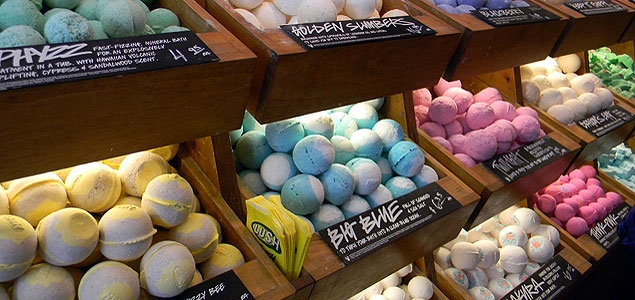Fearing Child Labor, LUSH Promises to Remove Mica From All Products
2 min read
Latest News –

Global bath and body brand LUSH Cosmetics has committed to removing all traces of mica from its products over concerns that it is unable to guarantee that the mines that extract the product are free from child labor, the Guardian reports.
The company made the announcement after being contacted by the Guardian, which was investigating how cosmetics producers are trying to clean up the mica supply chain. An earlier story by the Guardian found that many consumers have switched to mineral cosmetics as a natural beauty alternative after media reports linked cosmetic makeup with diseases such as cancer. It is common for these mineral products to contain mica, a glittery substance used in blusher, eyeliner, eye shadow, mascara, lipstick and foundation.
The main source of this material is India, which accounts for 60 percent of global production and possesses an industry that is estimated to have grown by 8.5 percent during the last two years. Child labor is a major problem in India’s mica mining business and 86 percent of the country’s mica exports in 2010-2011 were unregulated.
Mark Constantine, a co-founder of LUSH, told the Guardian his company usually requests spot checks on its suppliers to be assured about local practice, but the area in which mica is mined is too dangerous for visitors to arrive unaccompanied. This means that LUSH is unable to independently guarantee that child labor is not used at the sites that supply the mineral to the company.
These concerns had first been raised years ago, Constantine said, but LUSH had thought assurances by audit would be enough. In light of recent events, it has now reconsidered its policy.
“It made us all run around and ask, what are we going to do then? Why are we using it?” Constantine told the Guardian. While LUSH has not set an official date for eliminating the minerals, it already is using synthetic replacements where possible.
“We have been moving across to synthetic mica on things like the bath bombs. Really, we would like to be able to get a mica that was mined correctly. At some stage, the whole industry should take responsibility for that,” Constantine added.
Child labor also is a major problem in the cotton supply chain, and brands have been taking action to eliminate it. Last fall, 136 brands and companies representing an estimated $1.024 trillion signed the Company Pledge Against Forced Child and Adult Labor in Uzbek Cotton.
One of the companies, IKEA, announced in February that it has expanded the use of sustainably sourced cotton in its products to 72 percent, up from 34 percent in 2012. The furniture company uses around 0.6 percent of all cotton grown around the world, and in 2013 sourced 79,000 tons of cotton from more sustainable sources; it used a total of 110,000 tons of cotton in 2013.
(c) Latest News – Read entire story here.





